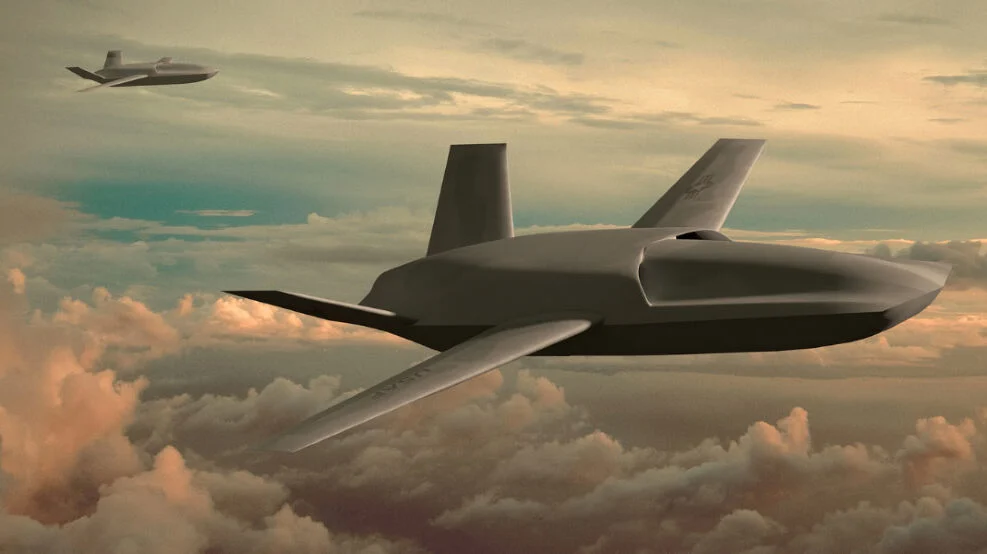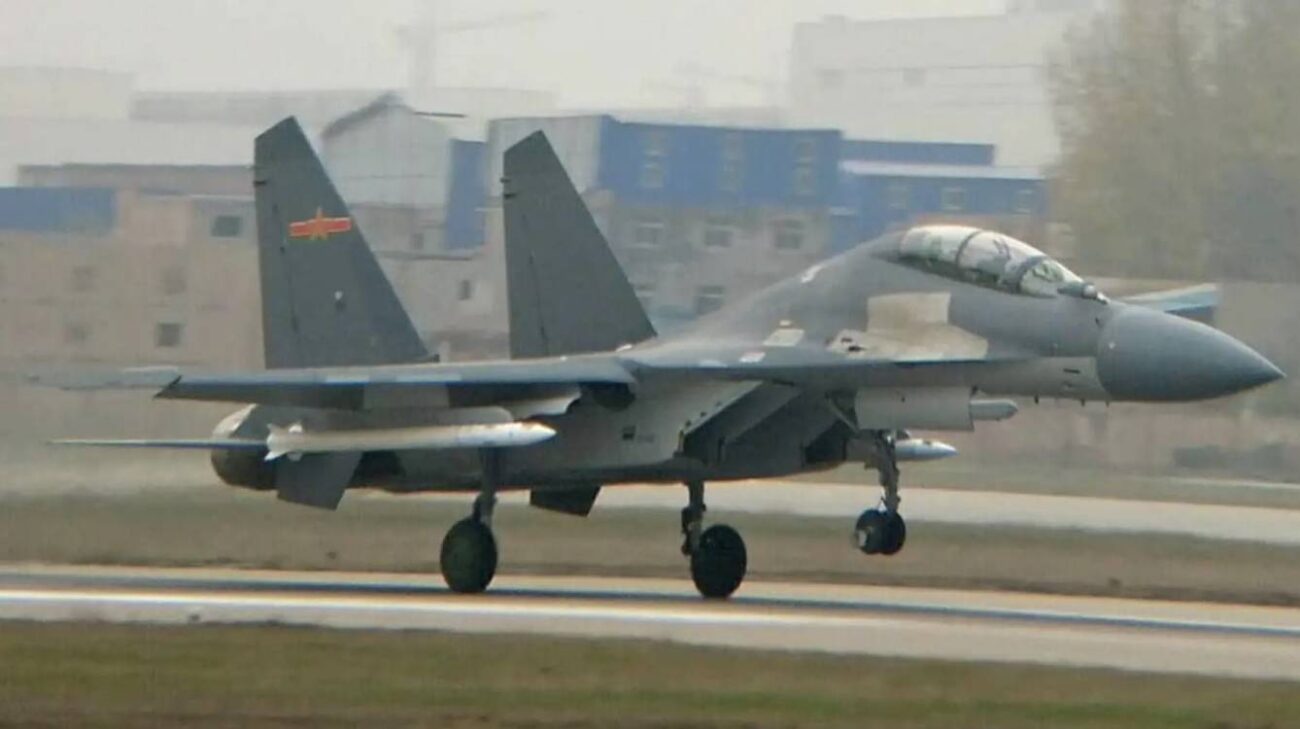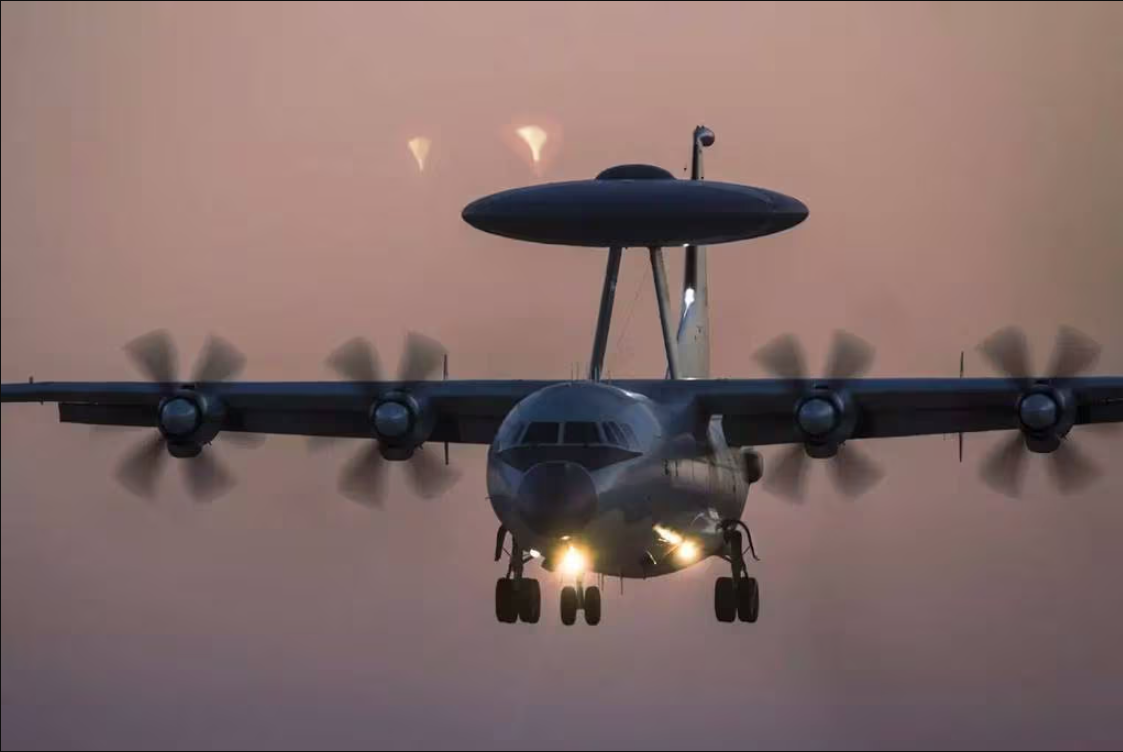Uncrewed, reusable, weapon-carrying fast-jet aircraft have had many names since the WW2 and Vietnam-era idea was revived in the mid-1990s. Maybe 37, which is 37 more than the number of such aircraft that have been delivered to operational units. Collaborative Combat Aircraft (CCA) is the latest. It’s survived for almost a year, which may be a record.
Last summer I was asked by the Air Force Association’s Mitchell Institute to participate in a two-day CCA wargame and write up the body of the report, which was published on Tuesday together with a video presentation. It was a fascinating exercise. About 60 participants from AFA, the Air Force, industry and academia were involved, divided into five groups. Three Blue teams represented US forces, with different detail tasks but the same operational objective: to prevent People’s Liberation Army forces from securing and holding air superiority over the South China Sea. A Red Team cell deployed the PLA forces and reacted to the attackers’ first day move, and a White Team kept score. AFA staff provided Panera sarnies, manhole-cover-size cookies, coffee and sodas to keep us alert for surprise moves by the enemy.
The full report has the details, but its most surprising conclusion was this: Buy them cheap and stack them high. Given a choice of generic CCA types and a notional budget, all three Blue teams chose large numbers of CCAs that were barely larger than cruise missiles, large enough to carry a couple of AMRAAMs or StormBreakers, and had relatively long range at high subsonic speed. The first strike pulses were predominantly composed of CCAs and many of them were not expected to return – however, they were at least intended to survive long enough to use weapons.

The CCAs were tasked, first, with causing damage to Red’s air defenses by direct attack, disruption, and in the endgame by soaking up missiles. Operating with manned aircraft, they added magazine depth, acted as an advance guard to extend engagement range, and served as compelling decoys. In the process, they reduced Day One attrition among the most capable manned aircraft, while making use of less survivable aircraft as launch platforms. They were used both independently and in joint operations with manned aircraft – but that did not mean in formation with them, just within line-of-sight, the distinction being that LOS directional point-to-point links are hard to jam.
Vehicles that would cost a more than a quarter as much as a manned aircraft, of the kind that has been discussed by senior defense leaders, were not much in demand. The term “loyal wingman” was not used. I may or may not have threatened to levy a forfeit on any player who did use it.

An assessment of Red’s capabilities in home waters drove the unconventional thinking. Two capabilities in particular were expected to cause heavy losses for a conventional mixed-force air attack. One was the PLA-N’s surface action groups (SAGs), in this case not carrier-centric but acting as mobile, area-denying anti-air-warfare (AAW) assets. The other was the combination of KJ-500 airborne early warning and control (AEW&C) aircraft with PL-17 long-range air-to-air missiles launched from J-11-family fighters. In this case, the KJ-500’s role is not only early warning but third-party targeting for missiles that can fly farther than fighters can guide them – a capability that non-AESA AEW&C systems cannot match.

Because these systems-of-systems operate on or over the open ocean, they present a multi-axis threat to aircraft entering the area, unlike the linear array of the land-based Soviet-style integrated air defense system (IADS) that people spent the last five decades worrying about, and that low-observable designs with “bow-tie” signatures were intended to defeat. Hence the overall goal was to degrade them as far as possible before exposing most manned forces.
“A ton of small vehicles” turned out to be part of the answer and raised a lot of detailed questions that remain open for discussion. One of them, logistics and deployment, I’ll address in the next few days, because this post is already long enough.
A big one, in my view, was the relationship among rules of engagement, connectivity and autonomy. For example, if you have strict RoEs that call for multiple sources and a human in/on the loop, you will be hamstrung without good connectivity. But a multi-sensor platform that can autonomously process sensor inputs can remain effectively connected with much less bandwidth, even under the same RoEs. By increasing autonomy further, the unmanned system could process and act on RoEs without human intervention and with as much reliability as a guided missile. We routinely launch missiles against things we can’t see, and don’t require them to check in before impact, one argument went – what is so different about a CCA? And when the balance of forces otherwise seemed unfavorable, or Red’s comms jamming was working too well, letting the robots off the leash was an effective option.
In discussions of cost and numbers, autonomy was sometimes judged as an “exquisite” (super expensive) capability. Some of us pushed back. Autonomy itself is built into processing hardware, which isn’t expensive in a limited-life, moderate-g platform, in the form of software that can be replicated at very little cost once developed. Sensors to deliver reliable target classification and identification are more costly, but the answer there may be modularity – not every vehicle need carry a full suite as long as LOS communication among the CCA formation is reliable. Also, a small and attritable vehicle can be sent close to the defenses to discriminate and identify priority targets.
Cost is vital. In the Mitchell Institute’s roll-out video, Kratos Defense vp Robert Winkler recalled an Air Force Research Laboratory representative at the wargame saying “we have proven that we can get these vehicles for $600 per pound” of airframe weight, versus $4,000 for today’s fighters. That’s how the Institute’s recommendation the USAF can buy them in large numbers without cutting deeply into other capabilities could be feasible. How can it be done? Everything from chips to radios to engines costs less if it’s designed for a lower lifetime and a subsonic low-g environment. “You don’t need to design with a ton of redundancy or for 10,000 hours, ” Winkler added. “If you design it like a manned aircraft and try to squeeze cost out, you end up with something like the Boeing MQ-25, which is $125 million in the 2024 budget.”
$600 per pound versus $125 million? Whether or not that’s achievable, what you just heard was the voices of thousands of mainstream defense CFOs, suddenly crying out in terror.
